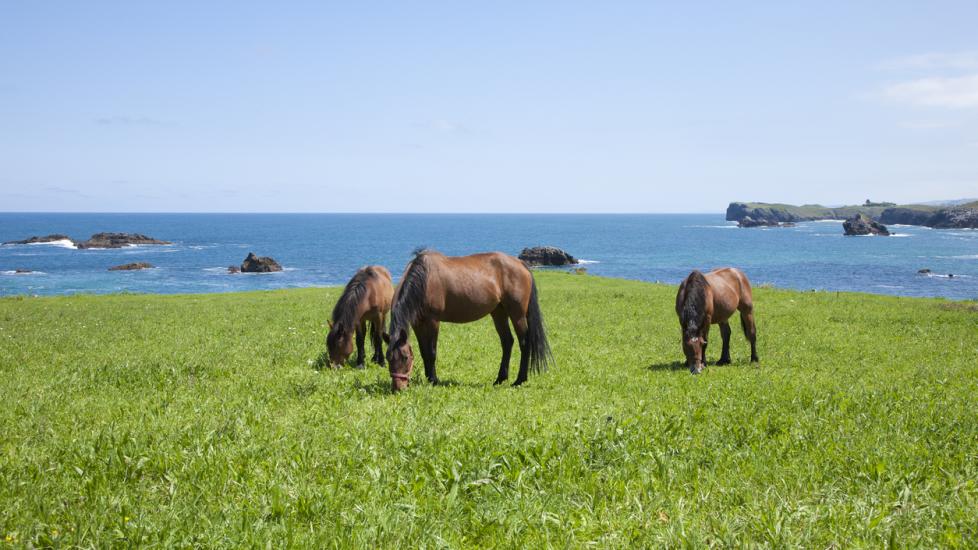Asturian
Reviewed for accuracy January 31, 2023.
The Asturian, a rare breed of horse found mainly in the Asturias and in Galicia of Northern Spain, is a popular choice among horse breeders for packing and riding purposes. Recently, the breed has come close to extinction, but associations were formed for its protection.
Physical Characteristics
This horse has a small head, small ears, large eyes, and a long, thin neck. The beauty of the Asturian, however, lies in its long, flowing mane. Standing at about 11.2 to 12.2 hands high (44-48 inches, 112-122 centimeters), the Asturian is strong with slightly high-set withers, sloping shoulders and croup, and low set tail. It also has sturdy feet well suited for harsh conditions.
Although the Asturian is most commonly seen in black, it is sometimes seen in bay. However, it should never have any white markings.
Personality and Temperament
The Asturian has a calm temperament, which it inherited from its ancestor, the Spanish Sorraia.
History and Background
The Asturian originated from the Northwestern part of Spain. Most experts believe it developed from crossbreeding the Sorraia horse from the Iberian Peninsula and the Garrano found in Portugal and Spain. It is also believed that the Celtic Pony also contributed something to the genetic makeup of the Asturian since it has an ambling gait, which is neither a trait in the Sorraia nor the Garrano.
Referred to by the Romans as Asturcons, it was popular with the French during the Middle Ages because of its easy, comfortable ride. Unlike most other horses, the Asturian (or Haubini among the French and the Palfries among the English) had an ambling gait and an usual trot. As a result, the Asturian became a horse for women rather than men, a veritable "Hobby Horse" from the gradual transition away from the word Haubini.
Today the Asturian is found high in the Asturian mountains, such as the Sierra de Sueve, but the largest group is concentrated in the western part of Asturia.
Health and Care
The Asturian is not prone to many hoof conditions luckily. However, Because this pony breed is hardy, over-feeding can make it easy to make them overweight and prone to diseases such as equine metabolic syndrome and Cushing’s disease.
References
Help us make PetMD better
Was this article helpful?
